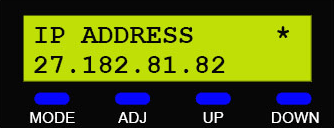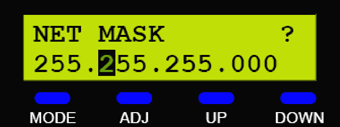Introduction
Bridges and overpasses lose heat faster overnight than neighboring roads because they are surrounded by air. Black ice forms in minutes when moisture in the air freezes into a thin, virtually invisible layer of ice on a bridge deck; this happens even though approach roads may be bare. The concept for a geothermal bridge deck heating system to improve safety and increase bridge deck life came about more than twenty-five years ago. The system uses a ground source heat pump system that recovers energy stored in the earth and uses it to heat fluid that is circulated through the bridge deck. The main purpose of the geothermal design is to eliminate black ice, not necessarily to melt heavy snowfalls.
During the R&D phase of the state-of-the-art geothermal bridge project (Figure 1) in Ontario, Canada, (designed by Becker Engineering's Hrycay Consulting group) the engineers needed to monitor both the temperature of the geothermal fluid as it flowed through the bridge and the mechanical strains the system experienced. They chose the Internet-enabled TCweb thermocouple monitoring system (see sidebar "Tidal Engineering's TCweb") from Tidal Engineering.
 Figure 1. The geothermal bridge as seen from the bank |
Initially, the characteristics and availability of the geothermal resources at the site were confirmed using the TCweb units as part of the investigation phase of the project. The bridge deck heating system design takes into consideration the structural integrity of the bridge: it will not impair the works or the roadway surface in the event of system leakage or failure.
Why Heat a Bridge?
The system works to cool the bridge deck in the summer time and heat it during the winter, reducing the temperature extremes and associated thermal expansions and contractions that stress and cause wear to the bridge structure. A heated bridge deck not only eliminates 24/7 rapid response by city crews to treat black ice, but it also reduces snowplow damage to the bridge, reduces damaging thermal stresses, and reduces maintenance requirements. Further, because salt is not required to make the bridge safe for driving, the bridge is expected to have a life span up to 25 years greater than the typical 50 year bridge life span.
The geothermal system consists of three independent geothermal heat sources (pile loop, caisson loop, and horizontal ground loop): two electric flash boilers for peak loads and backup of the geothermal system; one ground source heat pump to raise temperature of the heat transfer fluid, to meet peak demand; and dual supply/return piping for the bridge deck loop to facilitate winter maintenance and provide reliable redundancy.
Piping grids cannot generally be placed in the aggregate between roadway pavement on bridges. As a result, an internal network of pipes, carrying a glycol and water solution, draws heat from the ground (Figure 2) and circulates the warm fluid through the various loops. Because thermal expansion/contraction effects may be greater in heating systems for bridge decks it is important to monitor not only the temperature of the fluid, but also the strain experienced by the piping systems and roadway. Bridge decks require approximately 100 Btu/hr/ft.2 of surface for deicing.
 Figure 2. The roadbed showing the piping grid that will circulate geothermal fluid through the bridge deck to prevent or remove black ice from its surface |
In addition to the flash boilers, a solar collection feature recharges geothermal stores and reduces thermal cycling on the bridge. It does this by means of a dark gray tinted sealer on the bridge deck that absorbs sunlight during the day. As the fluids run through the deck they will pick up this heat and transfer it away from the bridge and back into the ground sources, where it can be used to maintain the bridge's constant temperature, as needed, once the sun goes down and temperatures drop.
Strain gauges inserted throughout the deck also allow engineers to monitor the strain on the structure as vehicles drive over it. Should they see a strain on the deck, strategically placed cameras let them identify which vehicle is causing the strain.
The bridge opened for traffic in October of 2007. TCweb units currently monitor 52 data points, including geothermal temperatures and mechanical strains on the bridge deck heating system allowing municipal and contract engineers to log data, and remotely monitor bridge systems.
Provincial and other municipal road engineers are watching closely the performance of the $1.3 million bridge over the north branch of Cedar Creek on the Arner Town line. By using the various ground sources, in conjunction with the boilers at peak times, the bridge maintained a constant temperature throughout this past winter and experienced no ice formation.
HRYCAY Consulting Engineers (formerly BTS Consulting Engineers) is an independently owned and operated consulting firm and a member company of the Becker Engineering Group. Its office facility is located in Windsor, Ontario. HRYCAY is a multidiscipline firm that provides services in the areas of motor vehicle accident investigation and analysis, civil and municipal design, and computerized 3D visualization.
| Tidal Engineering's TCweb The TCweb (Figure 3) connects to the Internet via its built-in 10Base-T Ethernet communication port or optional 56K fax modem. You can configure the device to create and serve HTML report pages from its built-in Web server and connect up to 16 units in a master/slave RS-485 daisy chain arrangement to monitor 256 sensors on a single Web server. Because temperature limits, thermocouple type, and alarms may be set for each individual channel, the TCweb is ideal for use in monitoring geothermal bridge applications.
The TCweb supports Type J, E, K, R, S, T, B, N, and C thermocouples with a display resolution of 0.1°C. Temperature measurements can be made up to 16 times per second with values reported in either °F or °C; cold junction compensation is built in. A Form C alarm relay can be programmed to operate under specified conditions to energize an audible or visual annunciator. The unit features a backlit LCD, and may be ordered with up to 8 MB nonvolatile Flash memory for data logging. TCweb Network The network setup screens for gateway, TCP/IP address, and net mask are shown in Figures 4, 5, and 6, respectively.
The master/slave wiring of the TCweb supports cable lengths of up to 3000 ft. between master and slave units. |



